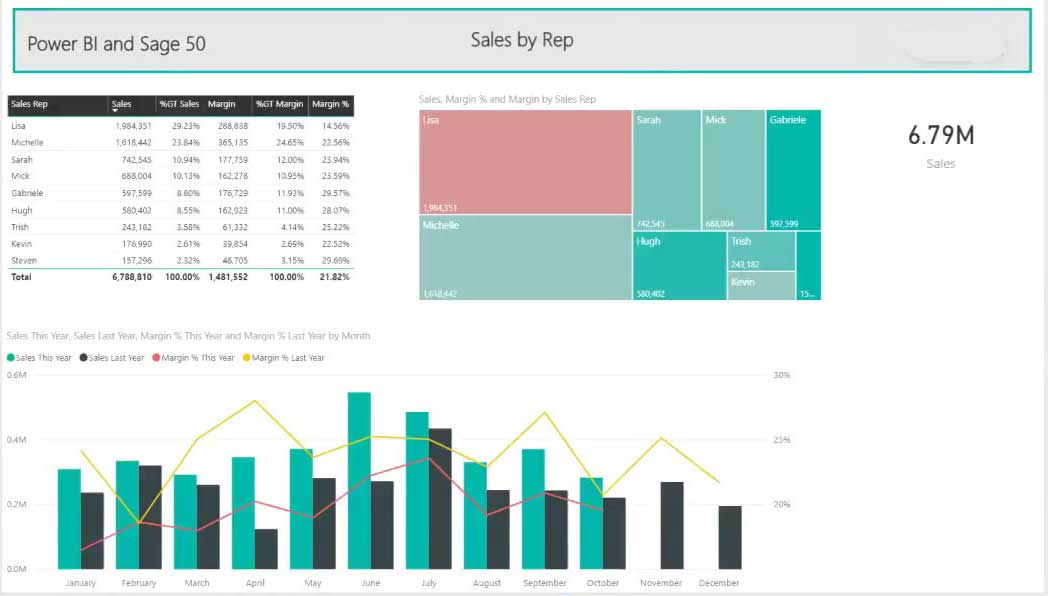Using Your Data effectively
According to Forbes we reate roughly 2.5 quintillion bytes of data every single day but it has become more and more important in the business world. Yet, most of this data is underused — particularly in business. Our Sage Enterprise Management Product Manager Sage business partner outlines what enterprises can do now to start using data more effectively. Data analysis; is a process of examining data in order to find patterns, trends, or other interesting information.
What are the benefits of using data? The benefits of this include – Data analysis can also help companies in understanding how consumers think and act, as well as what they are likely to do next. The process of data analysis is a difficult one, but it can be done with proper knowledge, training and experience.
Here are some of the ways that businesses must adapt to gain value from their data:
IT managers must now look at their data in a different way. They must ask questions such as, “What is the most useful value that we could derive from this data?” and “How does my organization extract maximum value from its existing assets?”
The benefits of data analysis are many because it helps businesses make better decisions and understand their customers better. It also helps companies understand how much money they could make by improving their marketing.
Sage 50 Accounts data Analysis
One way to improve business data analysis is by utilizing Sage 50 accounting software.
Sage 50-business management software helps you understand your company’s business processes. It has many modules like accounting, human resources, inventory, and customer relationship management.
With Sage 50 you can manage your finances and make better business decisions. Sage can also help you to analyse data and predict future outcomes. The Sage 50 accounts package is an affordable software that has a lot of features for small and medium sized businesses.
Sage Accounts Training For Lasting Benefits
Many companies aren’t as committed to IT training as they should be. A lack of IT training means that, for software such as Enterprise Resource Planning systems, businesses face either higher costs due to external servicing or reduced effectiveness due to staff being unable to use the system properly. Consistent training has had a profound impact on the way businesses approach their IT.
To make any business IT system a success it is critical that managers and chief executives make training for staff a priority. The right approach to software and systems is fundamental in drawing value for business. For training and bespoke training get in touch.
Sage 50 Data Analysis and Reporting Explained: 10 Easy Steps to Use Sage 50 Better
Sage 50 accounting software helps in managing business finances. It is a powerful tool for small to medium-sized businesses. However, the software can be difficult to use for those who are not familiar with it. Sage 50 Data Analysis and Reporting Explained: 10 Easy Steps
1. Sage 50 Accounts Remote Connection
Sage 50 Accounts (now Sage 50cloud) accounting software can facilitate, cloud access via Office 365 integration, giving you more freedom and flexibility in how you work.
2. Automatically sync Microsoft Outlook contacts and Sage 50 Accounts contacts* to save you time.
Access customer information, credit limits, contact details, and order history from Microsoft Outlook.
3. Cloud Back –Up
Get security and peace of mind with automated data back-ups stored offsite, in the cloud. You can also undo data entry errors by restoring data from the cloud as of a particular date. Never again be stuck without a recent backup.
4. Sage 50 Accounts with Microsoft Office
Minimize your vendors’ list and easily manage your technology platforms – and your budget – with one monthly payment that covers your core business solutions, including your accounting package and your office suite.
5. Sage 50 Accounts Dashboards
Keep a finger on the pulse of your business with a visual dashboard highlighting key areas of performance and stay a step ahead with a view of key revenue and budget trends.
6. Customers & Sales in Sage 50 Accounts
Manage your customer contacts and create quotes, sales orders, and invoices with ease. Track customer payments, issue monthly statements, and customize your forms with your logo and specific information. Take your invoicing to the next level with mobile invoicing from wherever you are with Sage 50 Accounting.
7. Vendors & Purchases
Keep track of your vendors, pay your bills and track your purchases. You can manage and track your expenses effectively with mobile payments and bank feeds in Sage 50cloud Accounting Software, so no matter where you are your expenses are recorded and the headache of lost receipts is a thing of the past.
8. Inventory in Sage 50 Accounts
Optimize inventory management and control inventory costs and quantities. Take it a step further and assemble items on the fly or create complex builds from stock items.
9. Reporting Centre in Sage 50 Accounts
Stay on top of your financial performance with more than 93 easy-to-generate reports. Define timeline parameters, view Budget vs Actual, and export to Excel ®.
10. Banking in Sage 50 Accounts
Transfer funds, make deposits, and reconcile your bank account. Make the process even easier with bank feeds – skip the data entry and sort your bank transactions into Sage 50cloud Accounting.












